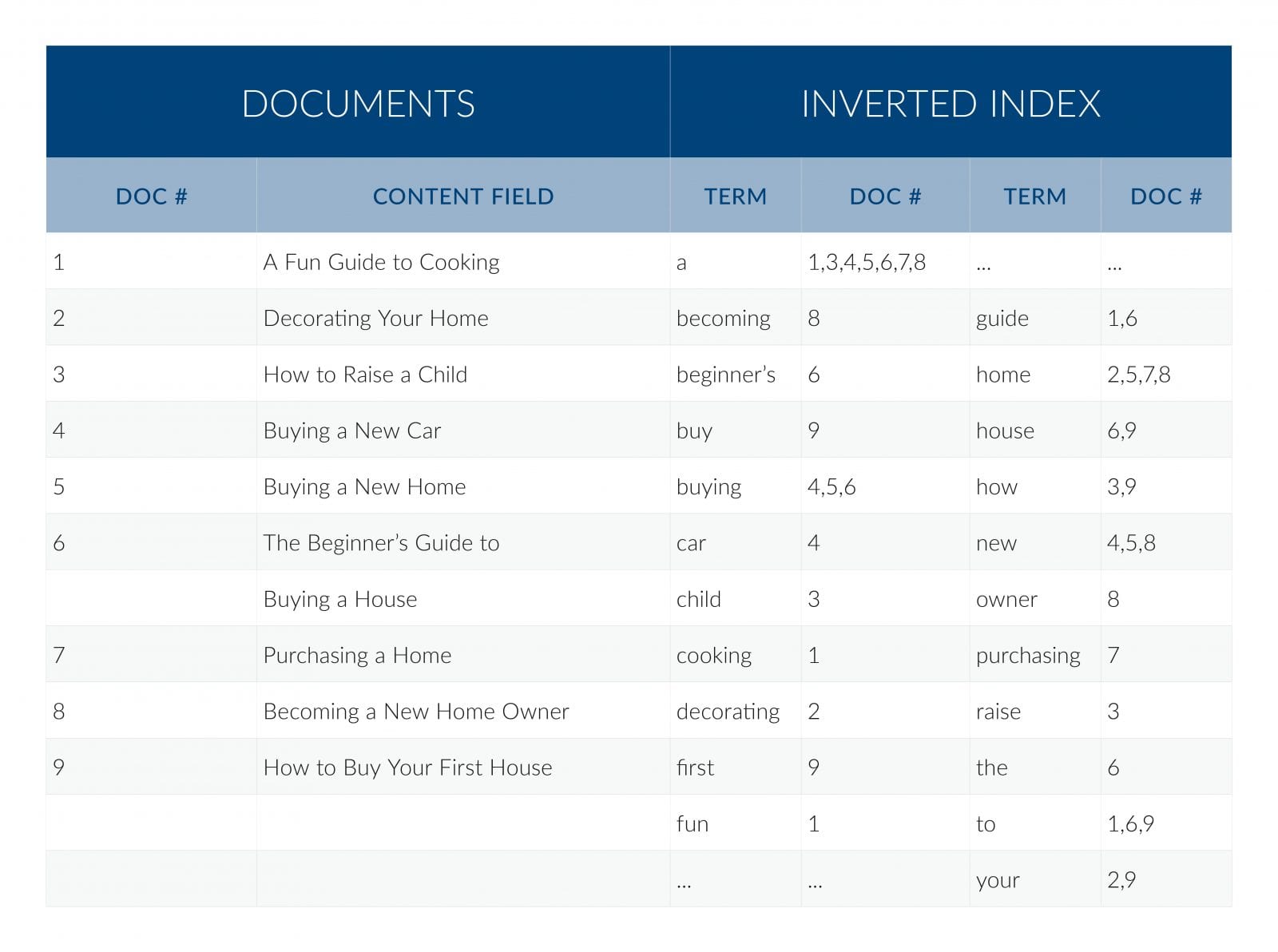The Awesome Power of the Inverted Index

The inverted index is a wonder that helps find and make sense of information buried in mounds of data, text and binaries. But many people don’t realize how widely inverted indexes (also called reverse indexes) are used.
Companies that aggressively pursue programs of digital transformation and seek to improve business operations should know what inverted indexes are and how they can unlock the power of information.
Inverted Indexes Speed Up Search
An inverted index is a simple but powerful way to search documents, images, media, and even data. Unlike just a keyword search, an inverted index allows you to search the inherent structure of any document.
There’s no need to use a table name or special query language to get the information you want. You just type it into a search box and the search engine figures out the rest.

Inverted indexes were invented decades ago, in the same era that much of the first AI and machine learning algorithms were born. But the vast increase in computing power in recent years has made it possible to make use of the inverted index structure and generate fast search results from huge stores of indexed data and information.
Inverted indexes are used in text search, but they’re also powerful in enterprise applications. One trick that is still used in web sites and other applications is to replace the search function for a relational database with an inverted index, which allows information in the SQL database to be found must faster and allows queries to be far more complex and specific.
One of the reasons they’ve become so popular is the Apache Solr open source project, which created a basic infrastructure for inverted indexes and doing searches over them.
Inverted Indexes Create a Map to Content
Inverted indexes should become an integral tool for IT innovators because they help companies make sense of the exploding landscape of data, especially data spread across many different forms and locations.
Remember, the inverted index provides a detailed, unified map to the content, wherever it is stored. As a result, an inverted index can locate content that has been harvested from dozens of different repositories. While each of these repositories may have its own search and access methods, those tools are generally confined to that specific repository — they can’t search and access data stored in multiple places.
An inverted index can bring together all of these repositories and allow you to search them from a single source.
With all of the massive and sprawling sources of information we have now, such as data lakes, databases, applications like Salesforce, and document repositories, it becomes increasingly difficult to know what we know if we don’t have a complete, integrated view into all of these areas.
An inverted index, therefore, becomes one of the most important ways to help companies know what they know.
Searching across data stores also helps companies discover information contained in data.
Inverted Indexes Create Value
But the next level up is insight applications. These applications take the information from the inverted index and use algorithms to determine clusters of related information. Using this, a company could see all the information related to a range of topics, such as a specific product, customer, type of customer complaints, or a sale. This offers new opportunities for insights.
From there, companies can then add signals to the applications that use the inverted index. The signals are collected from what happens to that information in the real world. For instance, when you type the word “Elton”, an analysis of signals using an inverted index could show that word is strongly associated with Elton John and then create a type ahead or autocomplete that uses this information to make a better user experience.
When you type a full query, the application could use signals to suggest other queries that would be similar. Once the business sees what people actually click on for a specific search, it can take that signal and make other suggestions or change its ranking for search results going forward.
A company can take signals from which deals closed or which customer complaints were handled effectively and uncover patterns that led to positive results.
Finally, at the highest level, companies can search for patterns about related information within the inverted index — and this information doesn’t even have to be entirely text-based.
In the DNA research world, DNA sequences are mapped to inverted indexes and the suffixes of these sequences can be searched and patterns established by researchers.
Lucidworks Fusion Adds the Inverted Index
Lucidworks Fusion has plumbing to make better use of an inverted index and perform more advanced analysis with it than open-source tools.
For example, Lucidworks adds a set of connectors so that a company can link to almost any source of information and index the data inside it. Lucidworks also adds basic capabilities for search, so an easy-to-use search interface can be built.
Additionally, Lucidworks offers productized applications for special purposes where users have found they have a need for certain types of tools. Lucidworks can provide better data as inputs to AI and machine learning algorithms, so once advanced analysis and the hunt for patterns begins, these algorithms can be used to assist that search.
Finally, Lucidworks provides a toolkit for building custom applications.
An inverted index used through a product like Fusion or in some other way, can clearly provide answers to questions that other techniques cannot. It should be part of every innovator’s toolkit.
LEARN MORE
Contact us today to learn how Lucidworks can help your team create powerful search and discovery applications for your customers and employees.